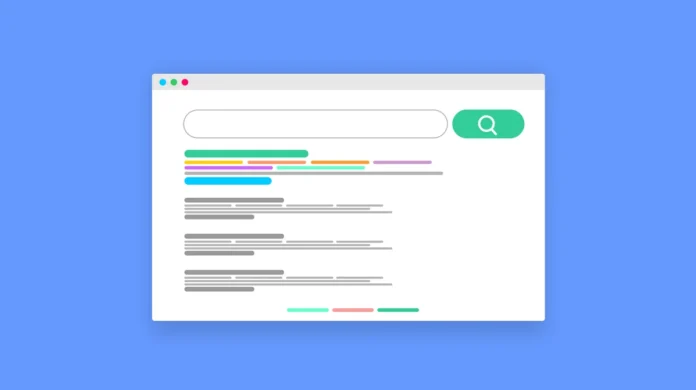Want to rank higher on Google and drive more customers to your website?
Every business wants to rank on the first page of search results. And here’s the truth – SEO is not some kind of dark magic that only computer geeks can do. It’s a mix of logical design decisions, technical setup, and strategic thinking.
The problem? Most business owners think they can just create a nice-looking website and then the website visitors will magically appear.
Without SEO baked into the process, you just won’t rank.
In this guide, I’m going to cover the exact SEO strategies you need to include as part of your web development projects to start getting results that really matter.
Here’s what you will learn:
- Why SEO Needs To Be Considered From The Start Of Development
- The Technical Setup Your Google Bot Really Cares About
- Content Strategies That Can Generate Real Growth
- Mobile Optimisation Secrets The Average Developer Misses
- The Analytics & Tracking You Need To Be Monitoring
Why SEO Needs To Start During Development
Here’s a fact that most people don’t know…
SEO is not something you tack on to a finished website. It needs to be considered and integrated at every stage of your web development project. If you try to add SEO to an existing site, it’s like trying to renovate a house with people living in it – messy, costly, and rarely effective.
Imagine you’re working with a results-driven web design agency for your web design and development project. If SEO were properly considered during development, it should start from the very first wireframe. Everything from the site architecture and URL structure to how the CMS handles metadata.
And the statistics support this. 68% of online experiences begin with a search engine. So if your site is not optimized for search engines, you are invisible to the majority of potential customers.
The best web development projects approach SEO as a core deliverable – not an afterthought.
Technical SEO: Your Foundation For Success
OK, let’s talk about the technical stuff…
Technical SEO is the bedrock of everything else you do. Without it, all your content marketing and backlinks-building efforts are basically pointless.
Here are the technical elements to focus on during development:
Site Speed Optimization
Page speed is now a direct ranking factor for Google. Your site also needs to load quickly to keep your users happy. Recent research revealed that 53% of mobile users expect a page to load in 3 seconds or less, with 40% of those surveyed leaving a site that took longer.
In other words, you’re losing a huge chunk of your potential customers before they even get to see your content.
Clean URL Structures
Your URLs should be human-readable, logical, and keyword-rich. You want to use clean, descriptive URLs that make sense to both users and search engines and that describe exactly what the page is about.
Mobile-First Architecture
Google uses the mobile version of your site as the primary version for indexing and ranking. If your web development project is not mobile-first from the start, you’re already behind the curve.
XML Sitemaps & Robots.txt
Your XML sitemap helps search engines crawl your site, while your robots.txt file tells Google which pages not to crawl. If you get these files wrong, you can end up blocking your entire site from being indexed.
Content Strategy During Development
Content is not something to be ‘added later’…
One of the biggest mistakes I see in web development projects is treating content as an afterthought. Your content strategy should be baked in from the start and inform the development process.
Plan Your Content Hierarchy
Before writing any code, map out your content strategy. What are your key service pages? What categories will you need for your blog section?
Work this planning stage so you have a logical content hierarchy and site architecture that users and search engines can easily navigate.
Optimize For User Intent
Pages have different purposes. Your homepage is not optimized for the same search queries as your service pages, which will differ from your blog pages. Different content types mean different user intent and optimization requirements.
Build For Content Scalability
Your website needs space for your content to grow. If you plan to create regular blog content, the development team needs to set this up so there is consistency in how your new pages are optimised.
Core Web Vitals Matter More Than Ever
Google’s Core Web Vitals are now a confirmed ranking factor…
These user experience metrics include:
- Largest Contentful Paint (LCP) – measures loading performance
- First Input Delay (FID) – measures interactivity
- Cumulative Layout Shift (CLS) – measures visual stability
Your development team needs to optimize for these because retrofitting the fixes after launch is much harder.
Schema Markup: The Secret Weapon
Want to stand out in the search results?
Schema markup is structured data that tells search engines exactly what your content is about. This is what powers those rich snippets you sometimes see in Google – star ratings, FAQs, product prices, and more.
Adding schema during development is quick and simple. Trying to add schema markup to hundreds of pages after a site has launched? Nightmares.
Link-Worthy Architecture
Site structure plays a big role in your link-building efforts…
When websites link to you, they generally link to specific pages. Your website needs to make it easy for visitors to find your most important pages, and you need to use internal linking to strategically boost authority where you need it most.
Blog architecture is a big part of this. A well-structured blog section makes it much easier to create linkable content that can naturally attract backlinks.
Tracking & Analytics Setup
You can’t improve what you can’t measure…
Before you go live, you need to have Google Analytics 4, Google Search Console, conversion tracking, and your custom dashboards set up properly. These are the analytics tools that you will use to measure and guide all your ongoing SEO efforts.
Local SEO For Location-Based Businesses
If you are targeting customers in specific geographic locations…
Local SEO needs to be included in your web development strategy. This includes dedicated location pages with content and metadata optimised for each service area, NAP consistency, Google Maps embeds, and local schema markup.
Recent statistics show that local SEO optimization can increase website traffic by 32%. For location-based businesses, this is huge.
SSL Certificates & Security
Security is a ranking factor. Period…
Every website needs an SSL certificate. Google not only prefers secure sites, but browsers now actively warn visitors about non-secure websites.
Your web development project needs to include HTTPS security from day one. SSL certificates are cheap and easy to implement during the development phase.
Ready To Dominate Search Results?
SEO-optimised web development is not rocket science. But it does need thought and knowledge. The strategies I have covered here represent the building blocks for any successful website launch.
The businesses that dominate online have SEO as a core part of their web development process. They understand that 91% of marketers said SEO had a positive impact on their website performance.
Start putting these strategies into place for your next web development project and watch your organic traffic start to climb. The investment you put into proper SEO during development will give you a return for years to come.
Because in the end, a beautiful website that no one can find is just expensive digital art.



